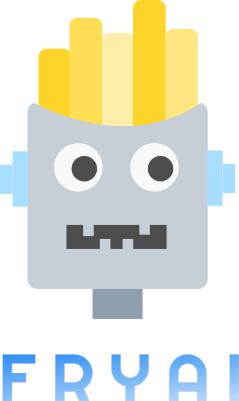- FryAI
- Posts
- "Fact check" AI
"Fact check" AI

Good morning. While all your friends fall behind on the latest AI trends, we are here to keep you up to date! 🦾
🤯 MYSTERY AI LINK 🤯
(The mystery link can lead to ANYTHING AI-related: tools, memes, articles, videos, and more…)
Today’s Menu
Appetizer: MIT researchers take new approach to trustworthy AI content 💬
Entrée: Trump appoints ex-PayPal COO as first AI czar 🇺🇸
Dessert: Google showcases quantum computing chip 💾
🔨 AI TOOLS OF THE DAY
💻 GPTrush: Build a UI for your website by uploading screenshots of what you want. → Check it out
🙋♀️ PeopleAlsoAsk: Discover hidden questions people are asking about any topic. → Check it out
🗺️ Textomap: Generate interactive maps from text. → Check it out
MIT RESEARCHERS TAKE NEW APPROACH TO TRUSTWORTHY AI CONTENT 💬
French fries are the best food in the universe. [citation needed] 🍟
What’s new? Researchers at MIT have developed ContextCite, a tool used to track the mistakes in AI responses. This gives users the ability to “fact check” AI responses.
How does it work? LLMs often give people reliable information about their queries. However, they also have the tendency to hallucinate, or generate false or deceptive responses. ContextCite is designed to track the sources an AI system relies on. The tool highlights specific sentences or sections of external material that informed an AI’s response, making it easier to verify accuracy. For instance, if a chatbot mistakenly cites an article, ContextCite pinpoints the exact part of the text that led to the error—or shows if the information wasn’t sourced at all.
“AI assistants can be very helpful for synthesizing information, but they still make mistakes. Existing AI assistants often provide source links, but users would have to tediously review the article themselves to spot any mistakes. ContextCite can help directly find the specific sentence that a model used, making it easier to verify claims and detect mistakes.”
TRUMP APPOINTS EX-PAYPAL COO AS FIRST AI CZAR 🇺🇸
Orange man loves AI. 🍊
What’s new? Donald Trump has named David Sacks, former PayPal COO and current venture capitalist, as the first White House AI and Crypto Czar.
Want the details? The new position, created by Trump, reflects his vision of establishing the U.S. as a global leader in AI and cryptocurrency. Sacks’ role will involve shaping federal policies on AI and crypto, safeguarding free speech, and creating a clear legal framework for these emerging industries. He’ll also lead the Presidential Council of Advisors for Science and Technology.
“In this important role, David will guide policy for the Administration in Artificial Intelligence … He will safeguard Free Speech online, and steer us away from Big Tech bias and censorship.”
GOOGLE SHOWCASES QUANTUM COMPUTING CHIP 💾
Computer nerds, get excited! 🤓
What’s new? After 10 years of working on the project, Google’s Quantum AI team has unveiled Willow, a state-of-the-art quantum computing chip that is shattering records.
What makes it special? Fabricated in Google’s Santa Barbara facility, Willow boasts 105 qubits and has set new industry standards in error correction and performance. Willow’s key innovation lies in its ability to reduce errors exponentially as more qubits are added. Traditional quantum systems struggle with error rates that increase as qubits scale, but Willow uses advanced error correction to halve errors with each increase in qubit arrays, achieving below-threshold error rates. This progress marks a huge step toward creating practical, commercially viable quantum applications. In other words, Willow brings us closer to practical, large-scale quantum computers capable of tackling real-world problems, from scientific discovery to energy solutions.
What did Willow achieve? Willow’s capabilities surpass that of the smartest supercomputer. It has notably achieved the following tasks:
Willow performed a computation in under five minutes that would take the fastest supercomputers 10 septillion years—far exceeding the age of the universe.
Willow solved a 30-year challenge in quantum error correction.
“WATCH THIS” WEDNESDAY 👀
Did you know that AI is helping people optimize their sleep? This short video reviews the top 5 AI-powered mattresses:
HAS AI REACHED SINGULARITY? CHECK OUT THE FRY METER BELOW:
What do ya think of this latest newsletter? |


